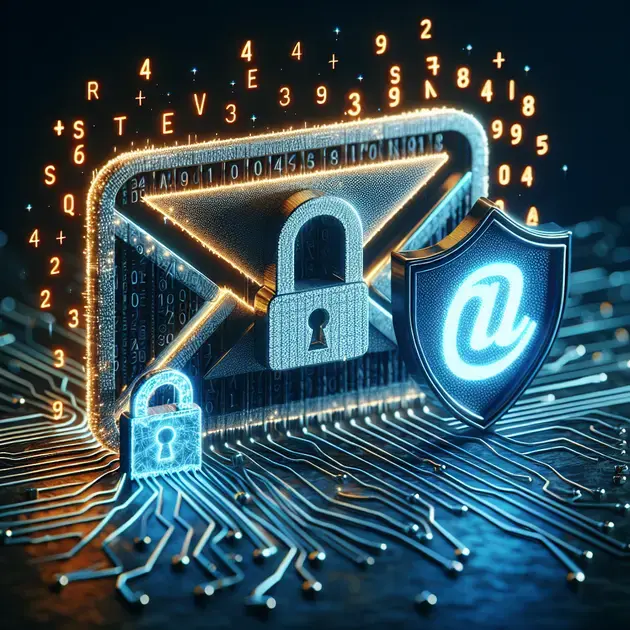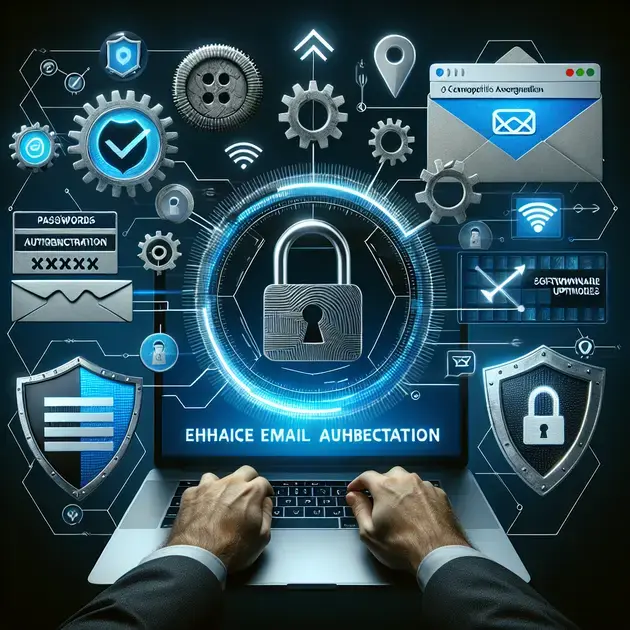In today’s digital age, securing your online presence is more important than ever. One key aspect of safeguarding your digital identity is protecting your email address from potential threats and malicious actors.
With hackers becoming increasingly sophisticated, it is crucial to implement strong security measures to prevent unauthorized access to your email account. By taking proactive steps to secure your email address, you can protect your sensitive information and reduce the risk of falling victim to cyber attacks.

Protecting Your Email Address from Cyber Threats
Protecting your email address from cyber threats is essential in today’s digital world. With cybercrimes on the rise, it is crucial to safeguard your online identity and sensitive information. Follow these steps to enhance the security of your email account:
Step 1: Use a Strong Password
Choose a complex password that includes a combination of letters, numbers, and special characters. Avoid using easily guessable information such as your name or birthdate. Consider using a password manager like LastPass or Dashlane to securely store and generate strong passwords.
Step 2: Enable Two-Factor Authentication
Two-factor authentication adds an extra layer of security to your email account by requiring a secondary form of verification, such as a code sent to your phone. Enable this feature on your email provider’s settings or app, like Gmail or Outlook.
Step 3: Be Cautious of Phishing Attempts
Phishing emails are a common tactic used by cybercriminals to steal sensitive information. Be wary of emails asking for personal or financial details and avoid clicking on suspicious links or attachments. Use email security tools like Avast Secure Email Gateway to detect and block phishing attempts.
Step 4: Regularly Update Your Software
Ensure that your email client and operating system are up to date with the latest security patches. Software updates often include bug fixes and security enhancements that protect your device from cyber threats. Enable automatic updates whenever possible.
Step 5: Secure Your Wi-Fi Network
Secure your home or office Wi-Fi network with a strong password and encryption method like WPA2. Avoid using public Wi-Fi networks for sensitive online activities to prevent eavesdropping and unauthorized access to your email account.
Enhancing Email Security: Best Practices for Safeguarding Your Online Identity
Enhancing email security is crucial to safeguarding your online identity and sensitive information. Follow these best practices to protect your email account from cyber threats:
Step 1: Update Your Email Settings
Review and update your email settings to optimize security features like spam filtering, encryption, and email forwarding rules. Most email providers like ProtonMail or Tutanota offer advanced security settings that can be configured to enhance email protection.
Step 2: Educate Yourself on Email Security
Stay informed about the latest email security threats and best practices by reading online resources and cybersecurity blogs. Websites like Cybersecurity and Infrastructure Security Agency (CISA) provide valuable insights and tips on email security measures.
Step 3: Regularly Backup Your Emails
Backup your important emails and contacts to a secure cloud storage service like Google Drive or Dropbox. In the event of a cyber attack or email account compromise, having backups ensures that you can restore your data and maintain access to critical information.
Step 4: Monitor Your Email Account Activity
Regularly monitor your email account for any suspicious activity, such as unknown login attempts or unexpected changes in settings. Set up email alerts for unauthorized access and review your login history periodically to detect any potential security breaches.
Step 5: Use Email Encryption Tools
Encrypt sensitive emails containing confidential information or attachments using email encryption tools like Virtru or SecureMyEmail. Encryption adds an extra layer of security to your messages, ensuring that only authorized recipients can access the content.
Mitigating Risks: Strategies to Secure Your Email Account
Implementing strategies to secure your email account is essential in mitigating risks associated with cyber threats. Follow these proactive measures to enhance the security of your email account:
Step 1: Conduct Regular Security Audits
Perform regular security audits of your email account to identify vulnerabilities and potential risks. Use cybersecurity assessment tools like Qualys or Nessus to scan for security weaknesses and prioritize remediation actions.
Step 2: Establish Email Usage Policies
Develop and enforce email usage policies within your organization or personal email account. Specify guidelines for handling sensitive information, accessing emails from remote locations, and using email forwarding services. These policies help mitigate security risks and ensure compliance with data protection regulations.
Step 3: Invest in Email Security Solutions
Invest in email security solutions like Barracuda Essentials or Mimecast that offer advanced threat protection, data loss prevention, and email archiving capabilities. These solutions provide comprehensive security features to safeguard your email communication and sensitive data.
Step 4: Train Employees on Email Security
Provide regular training sessions on email security best practices for employees within your organization. Educate them on identifying phishing emails, using encryption tools, and reporting suspicious activities. Employee awareness and training significantly reduce the risk of email-related security incidents.
Step 5: Monitor and Respond to Security Incidents
Establish a security incident response plan for addressing email security breaches and incidents promptly. Monitor email traffic for anomalies, investigate security alerts, and take immediate action to contain and mitigate the impact of security incidents on your email account.

**Tips to Keep Your Email Address Safe and Secure**
Boosting Email Privacy: Steps to Protect Your Email Address
When it comes to safeguarding your email address, there are several important tips to keep in mind. One crucial step is to regularly update your passwords and ensure they are strong and unique. Avoid using easily guessable information such as your birthdate or pet’s name. Instead, opt for a combination of letters, numbers, and special characters.
Another key tip is to be cautious about sharing your email address online. Only provide it to trusted sources and avoid posting it on public forums or social media platforms. Be wary of phishing emails that may try to trick you into revealing sensitive information.
Using a reputable email provider with strong security measures in place is also essential for keeping your email address safe. Enable two-factor authentication for an added layer of protection. Regularly monitor your account for any suspicious activity and report any concerns to your email provider immediately.
Lastly, consider encrypting your emails to prevent unauthorized access to your messages. There are various email encryption tools available that can help enhance the privacy of your communications. By following these tips, you can significantly reduce the risk of your email address falling into the wrong hands.
Ensuring Email Security: Strategies for Safeguarding Your Personal Information
Protecting your personal information in emails is paramount in today’s digital age. Start by being selective about the information you share via email. Avoid including sensitive details such as your Social Security number or financial information unless it is absolutely necessary.
Furthermore, be cautious when clicking on links or downloading attachments from unknown senders. These could potentially contain malware or phishing attempts aimed at stealing your personal information. Keeping your email software up to date with the latest security patches can also help mitigate these risks.
Consider using a separate email address for online shopping and account registrations to minimize the exposure of your primary email address. This can help compartmentalize your digital identity and reduce the likelihood of spam or phishing attacks.
Regularly review the privacy settings of your email account to ensure that your personal information is being protected. Enable settings such as email encryption and spam filtering to enhance the security of your messages. By staying vigilant and proactive, you can significantly enhance the security of your email address and personal information.
**conclusion**
Protecting Your Email Address and Personal Information
In today’s digital landscape, safeguarding your email address and personal information is crucial for maintaining privacy and security. By following essential tips such as regularly updating passwords with strong combinations of characters, avoiding sharing email addresses online unless necessary, and being cautious of phishing attempts, you can significantly reduce the risk of unauthorized access to your accounts.
Enhancing Email Security Measures
It’s important to utilize reputable email providers with robust security features like two-factor authentication and encryption tools to protect your messages from prying eyes. Additionally, practicing discretion when sharing sensitive information via email and being mindful of clicking on unknown links or attachments can help prevent potential malware or phishing attacks.
Ensuring Maximum Security for Your Digital Identity
Consider segregating your online activities by using separate email addresses for various purposes, such as online shopping or account registrations, to minimize exposure to your primary email. Regularly reviewing and adjusting privacy settings, enabling encryption options, and staying proactive in monitoring for any suspicious activities can further fortify the security of your email address and personal data.